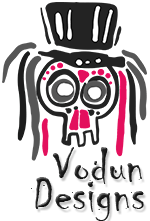c
| Started by glueing up a foam billet from a 1.5 inch thick 4 x8 sheet | made templates for the ends of the billet to guide the bow cutter |
 |
 |
 |
 |
 |
|
 |
 |
| rough cut of spiral for candy twist | Initail shapping |
 |
|
| After some shape refining, and a lot of santing. The paint is just some extra i has and is used to seal the peice as i get ready for molding | |
 |
 |
| Having the pipe down the center made initial work easier but now that it is getting time to make the mold the top needs to be filled in and smoothed for the pipe hole | On the bottom end I have inserted a pipe endcap so as the final mold will have a nice fitting opening for mounting the loly pops stick which in reality will be a piece of 1 1/4 PVC pipe. |
 |
 |
| To make a consistant thickness clay jacket for making the mother mold I screwed down two scrap pieces of channel that were 3/8 thick and used them to run the clay cutter down. This made quick work of cutting slabs from the full blocks of clay. | clay applied to first half all held in a jig for support. Note the end where the stick/pipe will connect has all been placed in one half of the mold. |
 |
 |
| Side view of the clay covered peice ready for fiberglass. The clay has been sealed with shalc to prevent the water in the clay from causing problems with the resin. | Note the view from the bottom that the original has been covered in plastic wrap to protect it from the water in the clay. |
 |
 |
| Fiberglass applied and filled with urathane rubber sitting on the floor curing. | View of the end of the mold showing where the pipe/stick socket. |
 |
 |
| View of the mold half. This measures about 11 inches in diamiter and 33 inches long on the inside. | Both halves of the mold completed along with the gaint candy mold I was also making. |
 |
Video goes here when i find it |
| Ready to start casting parts | The casting process pushed the roto-caster to the limits as this is about a 30 pound mold and has another 12 pounds of resin sloshing around in side. The best results I got was from making the casting in three pours. with each pour just after the resin had gelled but was still very sticky. For this I also tried two diffrent products from Smoth-on. First I tried smoothcast 57d which is meant for rotocasting. I found this to have good qualities in that it cast easy and had good light transparenty, but it was soft even when fully cured and would not hold shap even after full cure. I then tried smooth cast 325 and 326. Both worked good and were ridge. I found the quicker set time to be a huge benefit in time savings. Also slower rotational speeds tended to yield better results with less air bubbles. The 325 and 326 untinted were also rather clear as I was expecting more of a milk jug based on the description. And as expected I ended up with air bubbles in the casting from the roto process. With the non clear 57d you could not see any bubbles do to the white non clear nature. |
 |
|
| Cast parts sitting around drying after being sanded and washed to remove the silicone mold release | Initial plan was to run some 3/4 inch pvc wrapped in LEDs through the middle of the lollies. This 3/4 was mated with spacers to 1 1/4 pvc that is used for the lolly sticks. However I found this to work but have a bit more flex where the two pieces of PVC join to the casting. I was worried about the stress on the casting so i changed the 3/4 pvc for some emt. |
 |
 |
| turning down the bushings | |
 |
 |
| The finished lolly stick. The exposed emt was covered with heavy duty packing tape to electrically insulate it from the led strip. The emt also runs through the 1 1/4 pvc with press fit endcaps made on the lathe from pvc bushings. |
lower end of the lolly stick, showing the custom fitting glued into the 1 1/4 pvc and the 3/4 emt protruding from the bottom. This additionally make a great mounting point as a piece of rebar can be inserted into the ground as a stake and the emt just slid over the rebar |
 |
 |
| Upper end if the pvc | Upper end showing detail of the wiring coming through the pvc bushing. Also good to note here that I have run some wire to the far end of the led strip to add power to both ends increasing the brightness. |
 |
 |
| Lollypops in a drying rack from painting. Note that the electrical comes out of the pvc about 5 inches from the bottom. | The leds are so bright that you can see the center of the lolypop with just the resin dyed. Best results came from the ones that were tinted white and later painted. The white tint worked well to diffuse the leds. |
 |
 |


